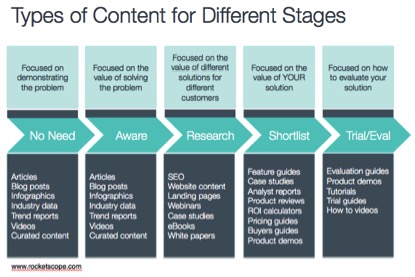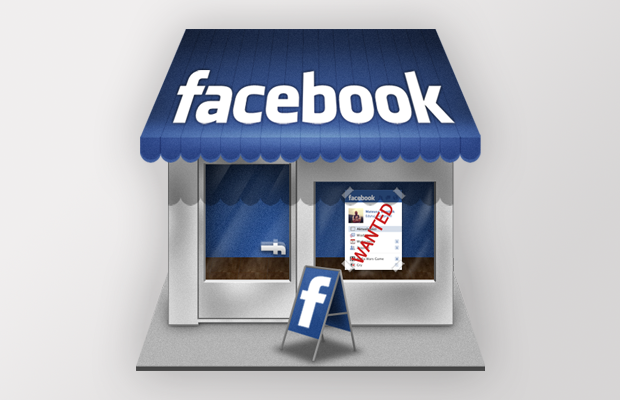Content Marketing for Small Business
Aisling Brennan, 11-Mar-2016
Although the concept of Content Marketing as a sales tool is relatively new to digital marketing, storytelling has been used since the dawn of the Marketing age. But it has experienced massive growth over the past couple of years with new and innovative ways to promote brand awareness, acquire customers and/or leads and build customer loyalty.
The primary reason for the explosion in Content Marketing adoption was due to Google's Panda algorithm update in 2011. This update penalised websites with duplicate, low quality content in favour of websites with authentic, branded and shareable content resulting in higher organic search rankings for those content-rich sites.
Marketers immediately reacted. So instead of pitching their products and services to a jaded and more wary audience, they started to deliver information that was more intelligent, more relevant and more valuable to potential buyers. This strategy was ultimately rewarded with higher rankings, increased website traffic, business and loyalty.
But creating content simply isn't enough. It's exceptional and unique content that stands out from the crowd, is what you need to offer. Exceptional content is rewarded by users who recommend and share it, and by search engines who strive to include better quality content in the SERPs.
What Type of Content Should I Focus On?
There's a variety of tactics that can be utilised, from simple blog posts to a more comprehensive Whitepaper or Webinar:
| BLOGS | ARTICLES | CASE STUDIES | WHITEPAPERS |
| WEBINARS | eBOOKS | NEWSLETTERS | TWEETS |
| INFOGRAPHICS | INDUSTRY DATA | TREND REPORTS | PHOTOS |
| PODCASTS | PRODUCT DEMOS/TUTORIALS | PRODUCT REVIEWS | HOW-TO VIDEOS |
| EVALUATION GUIDES | PRESENTATIONS | ROI CALCULATORS | PRICING GUIDES |
What you need to determine, given your limited resources (I assume both content and time are limited!), is which content type will resonate most with your audience? Also consider where the customer is on their user journey and map the right content to the right stage of this journey.
I like the below graphic from Rocketscope which illustrates the best content for each user journey stage. Try to ensure you have content that speaks to each stage of the journey:
How Do I Get Started?
First of all, outline your goals. What do you want your content to achieve? Increase awareness for your brand? Build thought-leadership within your sector? Expand your email list? Convert audience to paying customers?
Then focus on your brand strategy:
- Create personas to identify key segments and what stories will best resonate with them.
- Develop your brand story – the stories you want to tell.
Identify your channel or syndication plan – how you plan to distribute your new content? Twitter? Facebook? LinkedIn? Email? YouTube? Instagram? Pinterest?
Determine the frequency of new content publication. Do you have resources to commit to weekly or daily content creation? It's imperative that consistency is maintained so ensure it's a viable commitment and stick to it.
Detail what topics to cover that will resonate with your audience. Profile your database, delve into Google Analytics, track Social Media to see which topics are most shared/discussed, and talk to your customers to see what their preferences are.
Outline your Social Strategy. On which networks will you share and promote the content? What's the frequency of your publishing? Aim to blog once per week, post on Facebook/Instagram/LinkedIn three times per week. Tweet 10 times/week. Keep at it. Abandoned and stale profiles are worse than no profile at all – keep building & nurturing those relationships.
Small businesses should focus their efforts on 2-3 social media networks only. Twitter, LinkedIn and Facebook should be your initial targets. But consider Instagram or Pinterest if you've lots of beautifully crafted product imagery to share. For more info on Social Media check out Social Media 101 for more tips and advice.
Include SEO best practices in every piece of content created so the search engines, along with your human users, can access and read your exceptional content. But remember since the Google Hummingbird update (the algorithm update after Panda), social signals have a far greater impact on search results than ever before. So it's important to have a strong social strategy in place.
Finally measure the effectiveness of your exceptional content. This is critical. If you don't, how can you identify what's working and what isn't so that you can replicate and adjust as needed.
For newbies, I recommend tracking unique visitors, page views, search engine traffic, bounce rate, conversion rate, and the number of inbound links to your website. Also look at the performance of your email newsletter (if applicable) and your social shares. Aim to look at these metrics weekly so you'll be more in tune with how your content is performing.
Lastly, remember Content is not a quick fix. It's a long-term strategy. But the long-lasting benefits will outweigh the effort in the long run. Now, get content creating!
10 Tips to Improve your Facebook Business Pag
How to ensure your Facebook Business Page is a good source of leads for your business.


